C.M. Rosens's Blog, page 5
July 23, 2025
Films To Know Me… 1990s Edition
The 90s were a wild time. We got creature features and slashers galore, which moved into the torture porn trend of the ’00s, pushing the boundaries beyond the campy as effects got better. I did manage to whittle it down, and these films basically reflect my inner ’90s self. Horrifying. To nobody’s surprise, most of these films are from 1992, a truly bumper crop that year for me!
As of the time of writing, I’ve logged 65 horror films from the 90s, and the full list (always added to as I go) is here.
Honorary mention to Lurking Fear (1994) dir. C. Courtney Joyner, which is not a good film, but nevertheless is a 90s comfort watch in the Lovecraft vein.
Top 10 Horror Picks Nightbreed (1990) dir. Clive Barker Event Horizon (1997) dir. Paul W. S. Anderson Cronos (1992) dir. Guillermo Del ToroThe Silence of the Lambs (1991) dir. Jonathan Demme Bram Stoker’s Dracula (1992) dir. Francis Ford Coppola, because I am a basic bitch.Ghostwatch (1992) dir. Leslie Manning – I missed this first time around as I was (a) a small and (b) not in the UK at the time. It’s a good time. Parky, how could you, you minx. Candyman (1992) dir. Bernard Rose Split Second (1992) dir. Tony Maylam Sleepy Hollow (1999) dir. Tim Burton Blade (1998) dir. Stephen NorringtonTop 10 Horror Runners-UpIt (1990) dir. Tommy Lee Wallace La Setta/The Sect (1991) dir. Michele Soavi Tremors (1990) dir. Ron Underwood Snow White: A Tale of Terror (1997) dir. Michael Cohn The Craft (1996) dir. Andrew Fleming The Faculty (1998) dir. Robert RodriguezI Know What You Did Last Summer (1997) dir. Jim Gillespie The Return of the Texas Chainsaw Massacre (1995) dir. Kim HenkelFrom Dusk Til Dawn (1996) dir. Robert Rodriguez Bats (1999) dir. Louis MorneauJuly 21, 2025
(Horror) Films to Know Me… 1980s Edition
Ok now we’re playing on hard mode… mainly because I don’t think I’ve logged all my 80s films on Letterboxd, and I have no functioning memory for this, so let’s see how we go with what I’ve got logged.
I liked The Shining and The Howling and the million and one Halloween films, and Friday the 13th was fine, and Nightmare on Elm Street and all those little classics. So… this is a tough one. But this is what I thought was representative of me as a person/horror viewer, maybe. Gremlins (1984) dir. Joe Dante was going to be on here, but I’m not a big fan of it as an adult.
My picks are the ones I rewatch a lot and haven’t grown sick of yet, and the ones that really stick in my mind even if I don’t rewatch them loads.
Honorary mention is my first ever North Korean horror film, 불가사리 / Pulgasari (1985) dirs. Shin Sang-ok, Chong Gon Jo. I really get why it was banned, especially in the last part. Political allegory creature feature.
Top 10 Horror PicksThe Monster Club (1981) dir. Roy Ward Baker – a star-studded anthology of horror shorts with a fun narrative frame, in which John Carradine, playing the real-life horror author R. Chetwynd-Hayes, is invited to the Monster Club (a nightclub exclusively for monsters, with a fantastic floorshow) by Vincent Price, who relates several monster stories to him. The Hitcher (1986) dir. Robert Harmon – Gay. I keep poking Johannes Evans to watch this, because I think his analysis would be so good to read. If you haven’t checked out his analysis of Nightmare on Elm Street 2, you need to do that. He also did a great talk on Crimson Peak for the Romancing the Gothic charity event, Goths for Breakfast 2024. He was also a fab guest on Eldritch Girl for Queer Monster Hour! I really need to do more Queer Monster Hours. A Nightmare on Elm Street Part 2: Freddy’s Revenge (1985) dir. Jack Sholder – The director throwing Mark Patton under the bus for the gay subtext in the film was horrendous, and there’s a good documentary about it all. This film remains such a good analogy of the AIDS crisis, much like The Hitcher, and again, Johannes T. Evans’s essay on Freddy’s Revenge (The Straight Male Gaze on Pretty Male Gays) is worth a read. Hellraiser (1987) dir. Clive Barker – I liked the change from the short story so that Kirsty is the daughter and not an old friend in love with Larry. That worked really well. But my goodness, Film Frank is the most vanilla sweetheart, with his little polaroid collection. I loved the visuals so much though, and Frank emerging from the floor had a bit of an influence on the avatar from Fairwood House. Videodrome (1983) dir. David Cronenberg – LONG LIVE THE NEW FLESH! An American Werewolf in London (1981) dir. John Landis – I liked this more than The Howling, I think? Which was fine. But I have more nostalgia attached to this film than The Howling. Little Shop of Horrors (1986) dir. Frank Oz – I have this musical on repeat sometimes. It’s a comfort one. Society (1989) dir. Brian Yuzna – Oozy, icky, great film. Fuck the rich. Not in the good way. The Thing (1982) dir. John Carpenter – classic for a reason. The Lost Boys (1987) dir. Joel Schumacher – I had a lot of fun watching this with my mates during a very tough time, so this film stays on the list for sure.Top 10 Horror Runners-UpIn no particular order:
Rawhead Rex (1986) dir. George Pavlou – A great Clive Barker story, and I love Clive Barker stories. Plus, it’s so much fun. Killer Klowns from Outer Space (1988) dir. Stephen Chiodo – just. absolute. off the wall. chaos. I love it. It’s a comfort film for sure. Phenomena (1985) dir. Dario Argento – weird bugs and Jennifer Connolly. Love it. Prince of Darkness (1987) dir. John Carpenter – I really enjoyed this. It’s always the postgrads that get thrown under the bus, isn’t Possession (1981) dir. Andrzej Żuławski – An absolute ride of a film, and I have no idea how to explain/describe it. I don’t know why I like it. I can explain nothing. I know nothing. Some parts I can’t even watch. Some I watch on mute. Child’s Play (1988) dir. Tom Holland – another comfort watch. I have a lot of ’80s comfort films. La Chiesa/The Church (1989) dir. Michele Soavi – I liked this one a lot. I know it’s considered the unofficial third in the Demons films, but I watched this one first and preferred it to those, so I like it as a standalone film. Chopping Mall (1986) dir. Jim Wynorski – so many reasons not to trust robots. So many good, powerful reasons. Scanners (1981) dir. David Cronenberg – I always forget that this is more fun action than just the mind-exploding body horror, and I really enjoy the whole thing not just the famous bits.Poltergeist (1982) dir. Tobe Hooper – I liked all 3 films, so the first one is representing the trilogy.July 18, 2025
Author Spotlight: Sandra Bond
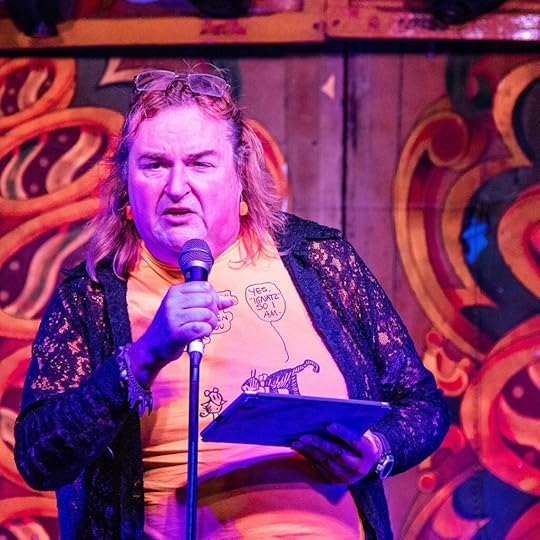
Sandra Bond (she/her) was born Staffordshire, UK. Trained first as librarian, then as lawyer, and discovered the reality of both was a big disappointment; worked as dray driver for a craft brewery in London until Covid mowed down craft breweries like a machine gun; now once again living in Staffordshire, delivering prescriptions for a pharmacy.
My best ideas come while driving; I love long road trips (though sadly US ones are off the menu for the foreseeable future). Discovered science fiction fandom as a teen and have hung around it for over thirty years; in return it gave me the contacts in the community to get a publishing deal. Apart from writing, I am a musician and songwriter (formerly in London indie-punk band The Donutsh), am queer and trans and an activist by both nature and practice, and am currently winning a lifelong battle with mental health and brain-weasels.
Author Links:
Author website: sandra-bond.com
Facebook: @SandraBondAuthor
Mastodon: wandering.shop/@klepsydra
Twitter: has been hurled into the far distance with a feeling of great relief
Goodreads: Sandra_Bond
Indie Story Geek: @Klepsydra
Three Men In Orbit (Amazon UK): Amazon Link
The Psychopath Club (Amazon UK): Amazon Link
The Devil’s Finger (Amazon UK): Amazon Link
Poetry Slum (Amazon UK): Amazon Link
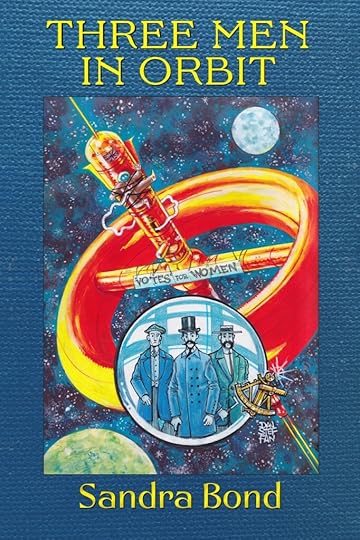 https://www.amazon.co.uk/dp/B0D9RTQF8B
https://www.amazon.co.uk/dp/B0D9RTQF8BWelcome Sandra, let’s chat about your work, Three Men in Orbit, which is a Sci-Fi comedy based on the characters of Jerome K. Jerome’s 1889 classic, Three Men in a Boat. What’s your relationship with Jerome’s book, first of all, and how did this develop into your novel?
I was ten years old, and we were having what was meant to be a quiet period at school reading our library books. I can’t recall why I took Three Men in a Boat out — perhaps I’d already heard about it — but I got into trouble because I kept breaking silence by laughing aloud at it. I couldn’t help myself.
Since then I’ve reread it, and its sequel Three Men on the Bummel, multiple times — every few years, in fact. A few years ago, we found a trend of people taking classic novels which were out of copyright due to age, and seamlessly — in some cases — rewriting them by inserting a fantastic element into them. “Pride and Prejudice and Zombies” is the trope-namer here, I suppose. Well, Jerome K. Jerome had also been long enough dead to be out of copyright, and I couldn’t see that anyone had tried this twist on him yet, and my publisher was delighted with the idea; so I embarked on writing Three Men in Orbit. It was great fun — as writing is supposed to be, but often isn’t…
What were the main challenges in bringing the Victorian/Edwardian material and characters to life for a modern audience?
Those who have read Three Men in a Boat will know that while it remains very funny, it lacks some qualities we expect in novels written today. For instance, it consists more of a string of amusing events with digressions for anecdotes or historical tales, than of an actual plot as modern readers demand.
More problematic still, it has no female characters to speak of, and even if I thought I could get away with a book lacking women nowadays, I wouldn’t want to. Happily, this gave me the major theme of the book; I was musing on what I could do to introduce some women characters, and the thought struck me that at the time it was set, the women’s suffrage movement was very much in evidence.
Now, I’d taken liberties with science to introduce anti-gravity and space travel and so on to the Edwardian era, and obviously this would affect such issues as transport, colonialism, etc. which took place in our history of that period. But while it might have also altered politics, I couldn’t see that it would *automatically* have changed that aspect of it.
So it all fell into place; I gave Jerome’s three men three women counterparts, who would show up at various points in the book and tangle with them, help get them out of scrapes, and so on. Once I’d worked that out, everything else pretty much flowed along naturally.
How did you set about navigating the dynamics of the titular characters and expanding on the themes – can you tell us about your writing process?
I wanted to write in as close a pastiche of Jerome’s style as I could (and pastiche is a strong point of mine — I worry that I don’t have a distinctive writing voice of my own, which may or may not actually be the case, but I am good at riffing off others who do), while at the same time making the book relevant to modern sensibilities and beliefs.
Introducing women as characters was the first step to that, but I also tried to update Jerome to the current day in other ways. For example, there’s a trans character (though they aren’t referred to as that, since Jerome wouldn’t have known the term) and another character who’s strongly hinted to be asexual.
It was an interesting exercise to incorporate such themes while staying as close as I could to the language which would have been available to Jerome over a century ago.
The three men of the title are essentially well-meaning but accident-prone men of the day. As a reviewer has pointed out, if such a trio went to space in reality, they’d be dead in no time because Space Is Difficult. I knew from the start that I wasn’t aiming for pure scientific accuracy — not only is that difficult, but also I wanted to produce a book that one felt Jerome *could* have written, and for that I called upon the proto-science fiction of the time — especially H. G. Wells — with which Jerome would most likely have been familiar.
Wells’ anti-gravity science is baloney, as Jules Verne famously pointed out, but his reputation seems to thrive despite that. So, when it came to giving the three protagonists character development arcs, it wasn’t hard to have the them respond to the suffrage campaigners with some suspicion but with basic decency, allowing them to learn from the experience and become (if this doesn’t sound too priggish) better people.
Your previous two novels, The Psychopath Club and The Devil’s Finger, also both blend comedy with SFF; what is it for you about the medium of comedy that allows you to tell the Science Fiction and Fantasy narratives in longer form?
I’m a depressive, and have been all my life. It’s always fascinated me that some of the very funniest people ever — Robin Williams, Spike Milligan — have struggled with their mental health. I try to use comedy as a kind of shield, off can bounce which some of the worst things that the world likes to throw at you.
Now in science fiction and fantasy, we often find that whether it’s set in the world we know, or in fictional ones, the same issues that beset us in reality also crop up in the genre — often magnified to an even larger size than they are in our world. Political toxicity, wars, diseases, there are dozens of things that can assail helpless characters in SFF.
Some authors like to create larger than life characters in response to these larger than life issues. I have always struggled with the concept of the hero; I think everyone, in reality, is pretty much just an ordinary human being, and we’re all just making it up as we go along.
So my protagonists tend to be ordinary people, who find themselves beset by extraordinary circumstances, and with the help of (often unsuspected) internal strength and/or external support, come through them in one piece.
Comedy is a big part of that; if you can see the amusing aspect of the mess you’re in, you can draw strength from that, and my characters tend to do just that. It can be an overt theme, as in The Devil’s Finger, or just a part of character building. If you find a humourless character in my fiction, it’s generally a sign that they’re not to be trusted. Humourless people worry me.
You also have a back catalogue of SFF and Horror short stories – do you find yourself working with similar themes across your work, or returning to settings/ideas?
To return to something I’ve already touched upon, I find it hard to believe in heroes. (Just look at the world around you. Do you see any?) I especially decline to participate in the trope of the Chosen One, which a lot of SFF seems fond of. I find it far more congenial, not to mention easier, to create normal people — people you might meet any day of your life, at least if you happened to live in their world.
I suppose that if you write about big heroes, you invite the reader to imagine themself as a big hero too; whereas if you write about regular people, you don’t ask the reader to stretch their imagination so much. They can — hopefully! — identify with them quite easily. And then you can save the imagination-stretching for the events they have to cope with.
What other themes do I return to? Well, I’m a left-wing queer author, and so I tend to write stories with left-wing queer sensibilities. I like to have diverse casts. I don’t treat queer characters as cannon fodder — I find it very disheartening that in 2025 this is still such a trope (“Bury Your Gays”). And I tend to have problems solved by thought and by communication rather than by action or by violence. Oh, I include action and violence, because one must keep one’s writing lively — but much of the time it’s made plain that violence is part of the problem and not part of the solution. I haven’t done much in the way of returning to settings.
I have tried several times to write more fiction set in the Midwestern locale of The Psychopath Club — I call it “The Muldooniverse”, after the fictional town of Muldoon where TPC is set — but I’ve struggled to make it work. I’ll keep trying. I like that setting, and of course, nowadays series books are very much the recommended thing for indie authors.
I am currently working on a fantasy series, which I expect to be 3-4 books long, each one a direct sequel to the previous novel. I haven’t written an outright fantasy world before and it’s stretched my writing muscles, but only in a good way. I’ve enjoyed creating that world, little by little, and I’m going to keep fleshing it out as I go.
I know some authors create their entire world first, before they write a word of the actual story, but I chose to do it this way because then I can’t run into a point where I say “Oh dear, I need something to happen which can’t occur in the world as I’ve created it” and have to take time out to amend the setting. That would be No Fun.
What has been your favourite reader responses to your work so far – either your latest novel, or to your work in general?
The trouble with the publishing scene nowadays is trying to get noticed. Back in the day, it was different; almost everything came from a major trad publishing house, and almost everything got reviewed.
I’ve had some very good reviews, and they’ve gladdened my heart, but I still feel like a voice in the wilderness; I feel that I’m writing good books, which people like who read them, but that most people don’t know that the books or I exist, and that’s the barrier I need to break through, somehow.
My favourite single review so far has been in the magazine “Portable Storage”, whose editor William Breiding devoted a good chunk of space to The Psychopath Club, and showed that he *exactly* saw what I was trying to do with it and why. I was practically punching the air as I read that one.
“A really good read… There are moments of very good and effortless scene building. The chapter describing the The Psychopath Club’s band, Horsehead, and its first gig at the VFW and ensuing chaos is a breathless rush of brilliance. And it’s immediately apparent that The Psychopath Club is Catcher in the Rye done properly.”
— William Breiding, Portable Storage
Every author, I suppose, is trying to communicate with the reader, and worries about whether they are doing so effectively or not. Breiding’s review showed me that, in his case at least, I’d hit my target right on the bullseye. A wonderful, warm feeling that was for me.
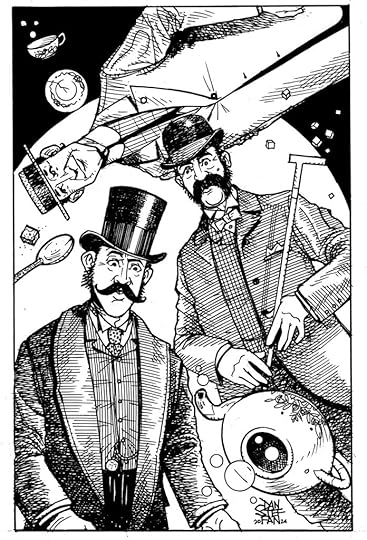 Frontispiece of Three Men in Orbit: https://www.amazon.co.uk/dp/B0D9RTQF8BLike This? Try These!
Frontispiece of Three Men in Orbit: https://www.amazon.co.uk/dp/B0D9RTQF8BLike This? Try These!
July 12, 2025
Summer Update 2025
Preorder Campaign – What’s Coming
What I’m Writing
What I’m Reading
What I’m Listening To
What I’m Watching
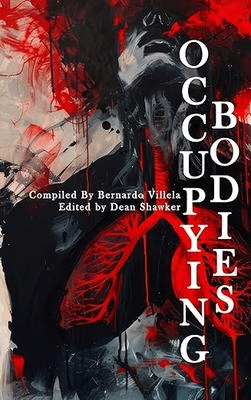
Step into a world where flesh betrays, bone revolts, and the boundaries of the human body dissolve in terrifying ways. This anthology drags you through skin-crawling tales of mutation, transformation, and grotesque obsession. Within these pages, writers dissect what it means to inhabit a body—revealing the fragility, the horror, and the dark beauty that lies beneath the surface.
Occupying Bodies is a new anthology from Black Hare Press, and my story “Along the Xylophone Road” is in it!
Even as the infection took me, I spent my last moments in front of the blinking screen in my room, reading your address over and over until it became an earworm, embedded inside me like a snatch of percussive song.
If there was to be nothing left of me, I hoped there would be something left of you.
And now you are still too far, so I drag myself along the xylophone road, following the metal rails into the distance. I don’t know my name, or what other people used to call me, but I know where you live.
I know where you live, and I am coming.
Ko-Fi members are getting World War I and Inter-War letters this summer, introducing Eglantine Pritchard (aged 19) and Gwendolyn Mostyn-Jenkins (aged 19) as nurses on the Western Front. At least, Egg is a nurse, and Gwen is up to no good.
Dear Kitty,
Something deeply unsettling has happened, and I feel I must write you and explain as best I can, as I cannot alarm anyone here with what sound like wild fancies.
June and July letters are from Sister S. as she does her best to nurse the wounded, while strange things plague her hospital. Meet Egg and Gwen from an outsider POV, and get to know these powerful young women in the early days before they come to Pagham-on-Sea.
read moreWIPs are progressing at different stages. I am revising my contemporary mystery-romance thanks to phase 1 beta comments. I’m drafting the next Pagham-on-Sea novel, and a couple of stories set in the Yelen & Yelena universe.
Best Friends Bury Bodies : 38.7K words into the rewrite of my beta draft, which was complete at 80.4K words. I’m streamlining and working in a better balance with recovery/addiction, and second chance romance/murder mystery. Let’s see if I’m happy with it when this draft is done. Ko-Fi members automatically get print / eArcs on request.
Feed : 40K words into this latest draft, and I’ve rubbed up against the midpoint problem. These books tend to run to 95-98K words, so the midpoint is approaching, and I’m not convinced by it. We’ll see how it works out for now but I’m anticipating several rewrites once I’m done with this draft. Ko-Fi members get extracts as I’m going along. Ko-Fi members automatically get print / eArcs on request.
As Below, So Above : 9.1K into this draft and still not convinced by the framed narrative, so I think I’ll try writing the main story and then the framed story and dovetail them later. I’m happier with the worldbuilding and the magic aspect than I was previously. Ko-Fi members automatically get print / eArcs on request.
Cold as Snow, White as Bone : no landing page for this yet. Experimental writing stage. I’ll dip back into this one when I’m ready.
What I’m ReadingFICTION:
Mark N. Drake – The Gathering of Shadows. Really honestly enjoyed this. Set in the Irish Sea on Darkisle, somewhere near the Isle of Man, a twisty period piece of private eyes and occult shenanigans with dark magic and evil books. Very eldritch, very fun, very British. Hooked into the whole series.
Alex Mura – Silence in the Basement. I had this ages ago as an ARC (sorry  ) but a fairly decent horror-thriller, definitely kept me entertained and it has cannibalism and tries to do some different stuff with it.
) but a fairly decent horror-thriller, definitely kept me entertained and it has cannibalism and tries to do some different stuff with it.
Nenia Campbell – Raise the Blood. Halfway through this, it’s a modern USA-set Gothic horrormance, and I’m intrigued to find out what’s going on with the weird rich family.
NON-FICTION:
Olive Dent – A Volunteer Nurse on the Western Front: Memoirs from a WWI camp hospital.
Edith Appleton, Ruth Cowan (ed) – A Nurse at the Front: The First World War Diaries of Sister Edith Appleton.
What I’m Listening ToWyrd and Other Derelictions by Adam L.G. Nevill, audiobook. I really like the premise of this, and the execution. I think my favourite is the desolate tanker, but I really liked a lot of the images in the other stories as well. If you enjoyed Ligotti’s The Red Tower, you’ll probably enjoy this, and if you enjoy this, you’ll enjoy Earworm by Mason Hawthorne. Recently finished this audiobook; I read the eBook version some years ago.
The Magnus Archives – eps 1-200, a re-listen. Just completed it. Love this one.
The Magnus Protocol – S01, a first listen. Really enjoyable, looking forward to the rest of it. S01 ends on a cliffhanger so desperate to know what happens, but I want them to finish the current season before I continue.
The Silt Verses – a first listen. I’m now on Chapter 04 of 45. Very much enjoying it. Horror-Fantasy.
What I’m WatchingHIGHLIGHTS
Snowpiercer (2013) dir. Bong Joon Ho – enjoyed this one, hadn’t seen it before! Like a bit of Tilda Swinton.
Fear Street: Prom Queen (2025) dir. Matt Palmer – bit of light fun, not really into YA type horror but this was enjoyable. I’ve liked all the Fear Street films.
Mastemah (2022) dir. Didier D. Daarwin – this was fine, I’m not hugely into French horror but I liked the way this unfolded.
The Outcasts (1982) dir. Robert Wynne-Simmons – eerie Irish folk horror-fantasy that’s really more of a drama with dark folk and fantastical elements. It’s deeply sad and unsettling.
불가사리 / Pulgasari (1985) dir. Shin Sang-ok, Chong Gon Jo – North Korean monster movie, which I found on YouTube. Deeply political allegory, I totally see why this got banned.
Bodrog (2018) dir. Salajan Mihai-Eugen – Very close to my limit of a specific gastrohorror element but I kept going. It hit a lot of deeply unsettling notes for me and made me feel sick in places. Some of it is a bit disjointed and could have been better executed? But I thought this was pretty good overall. Watched on YouTube.
Heretic (2024) dirs. Scott Beck, Bryan Woods – 100% would rewatch this. It has the usual run-of-the-mill shoddy atheistic theological underpinnings, which was a bit disappointing as I was hoping for more meat and teeth in that regard (you can have an atheist character without regurgitating all the usual armchair/internet atheist talking points, I promise, and I’m not even an atheist), but the psychological element of the horror made up for that. It went full batshit Criminal Minds on steroids in the final act. I definitely appreciate full batshit though. Hugh Grant is living his best baddie life.
La dama rossa uccide sette volte / The Red Queen Kills Seven Times (1972) dir. Emilio P. Miraglia – not the best giallo for me, and I don’t think this one is a rewatch. It was entertaining, Gothic AF, went hard on loads of elements, definitely entertaining.
The Woods (2024) dir. Sarah Lyons – I can appreciate some low budget indie films, and this one was a pretty good production. It had its issues, but it was ok to watch, and lasts just over an hour.
I’m going to do this challenge from 01 Aug-31 Oct and see how many more new-to-me horror films I can watch in that time.
I want to see new-to-me horror from around the world and see what I can find. I’ve already started building a watchlist across my various streaming platforms so I’ve got stuff to get me started wherever I choose to watch something. I have a Padlet for the countries I’ve seen horror films from now. Click here to view the map, and click the pointers to see the films I’ve added so far (not all the ones I’ve seen are on there but I’ve got at least one per country I’ve seen a horror from now).
As usual I’ll have a Letterboxd list for this.
Last year, I kicked off with A Song From The Dark (2023) dir. Ogodinife Okpue, which is a Nigerian-British film. I enjoyed that one a lot, so hoping that I pick another good one to kick off 2025.
Letterboxd List: 2024 Challenge is here.
Letterboxd List: 2023 Challenge is here.
Letterboxd List: 2022 Challenge is here.
July 11, 2025
Author Spotlight: Mark N. Drake

Mark N. Drake (he/him) was born in 1964, which is starting to sound like a long time ago! He was always an avid reader and in his teens very much into TTRPG, but his initial academic interest was physics. He got a degree in Applied Physics and went to do research work at what was then the Royal Aircraft Establishment. After a few years of that, he moved into University management. All the while he kept trying to write, but life kept getting in the way! Then in 2019 he decided to give it one last go; he dug out some old ideas from the 80’s, made himself write at least something each day and a few months later – pretty much as the pandemic hit – he had his first novel! Nowadays he’s semi-retired and splitting his time between County Durham and the South of France, writing when he can.
Author Links:
Website: markndrake.com
Shards of Shattered Darkness: Amazon Link
Bogganmor: Amazon Link
Bluesky: @mark-n-drake.bsky.social
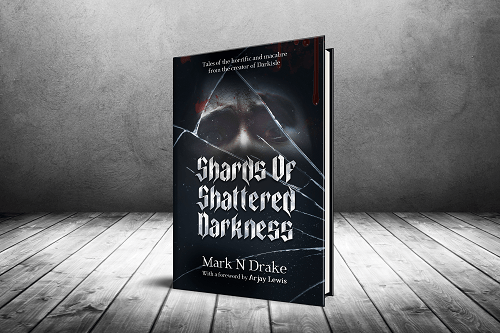
We’re here to spotlight two of your works – a collection of short stories, Shards of Shattered Darkness, and the fifth in your Lovecraftian/Weird Fiction Darkisle mystery series, Bogganmor. What is it that draws you to write weird fiction, and can you share some of your influences for these stories?
I was very into my D&D as a callow youth – then someone came along to the games evening with something called Call of Cthulhu. I was instantly hooked and set about finding as many books by Lovecraft, Derleth, Ashton Smith etc. as I could. I found myself very drawn to that early-20th Century vibe and ended up collecting all sorts of non-fictional resources from the time, which ended up being very useful when I came to research my Darkisle novels! I also read other horror, of course, but my first love was actually sci-fi, which I still dabble in occasionally.
Do you feel your background in physics and Higher Education has influenced/prepared you or inspired you in terms of the horror themes you write? If so, how?
Higher Education has certainly informed my writing. From the outset of my Darkisle series I wanted to create a sort of British version of Miskatonic University. I called it the University of Mercia and based it at Buxton. In Bogganmor, it really starts to come to fruition. I feel pretty comfortable writing about academia, so it features in a few of my short stories too. As for physics, I think it’s not much of a leap from that to cosmic horror. “You’re telling me there’s a vast, ancient, terrifying, doomed universe that is indifferent to humanity? That… yeah, that’s physics.”
Let’s start with Shard of Shattered Darkness. Tell us a little bit about this collection, and how you came to arrange these 18 stories in it – are they connected by theme, are they purely eclectic, what was your editorial process for their order and inclusion?
After my third Darkisle novel I fancied a break from all that plotting and decided to write a few short stories. But first I revisited some old ones – stretching right back to my early attempts in the 80’s – and thought some of them were a lot better than I remembered them! So, I brushed them off, in one case converted it into a Darkisle story, and decided to make them the core of a collection.
As they were written over such a long period of time there was no deliberate overarching theme, but they did fall into categories: stories inspired by the seasons, stories with a sort-of X Files feel to them, sci-fi horror stories and so on. So that informed the new stories I wrote for the collection.
The categories suggested their own order, which was more-or-less chronological; a historical action/horror story first, then on through contemporary to sci-fi. The exception being the four Darkisle stories, which I placed at the end in the optimistic hope they would inspire people to immediately seek out a Darkisle novel!
If you had to highlight 2-3 themes in the collection, what would they be, and how have you expressed them in the stories?
To my own surprise, I came to realise how many times – when I was looking for some inspiration – I ended up turning to music. It didn’t click until I was writing an ‘About These Stories’ bit at the back of the collection. I kept that passage in, which I typed as it occurred to me, as it seemed sort of fun!
As I mentioned before, the long gestation period of the collection pretty much precludes one unifying theme. But I suppose one notion that crops up a lot, in different forms, is identity. Sometimes it’s in the structure of the story – is it about who you think it’s about? And sometimes it’s about looking at something fundamental about human identity – both in the sense of asking what makes us human, and can we ever cross a line that means we’re not, but also in the more paranoid sense of “just what am I talking to here?”
Let’s move on to Bogganmor, Book 5 in the Darkisle series. Can readers start here, and still get into the situation and the series?
I hope new readers can dive in here, I’ve certainly tried for that. Yes, you’ll be aware that there are things that happened in earlier books that are being picked up in Bogganmor, but I hope I’ve done enough make it easy to get the gist of things. It helps that I use a Prologue in all my Darkisle novels; I know that’s quite old-fashioned but they are meant to be the journals of someone born in 1890, so I think that’s allowed! A Prologue is a great place to hide some “bringing up to speed” in!
How did you come up with Darkisle? What influences did you draw upon to create it, and how has this setting developed as the series progressed?
I’d been messing around with Cthulhu Mythos-inspired plot ideas since the 80’s – some for short stories, some for RPG scenarios. Plus, I’d done a lot of background research into the period. From 2011 onwards these ideas started to coalesce into RPG resources for a fictional location. I published these with a friend of mine under the banner of DRAKAT Games.
Parallel to that I was toying with the idea of using my home county of Derbyshire as a setting for supernatural stories, particularly the Peak District. The trouble is, I wanted some physical isolation and the Peak District isn’t all that remote. You can get there pretty easily from Manchester, Sheffield, Derby, etc. So, I decided I needed to invent somewhere – well, why not just use Darkisle and develop it as a location for fiction, not just a game resource? Since then, the place has developed a lot in my mind – and on the page. I feel quite at home mentally walking down the streets and lanes of much of the island now!
I often base its towns and villages on real places: Port Cattrick is based on Whitby, Carnven on Seaham Harbour, Seaview on Filey, and so on. As well as my desk research, I used to work at Beamish Museum, so I feel very at home writing about pubs, cars, shops, clothes – and how society was – in the 1920s.
In terms of the overall feel of the place, I’d be lying if I said I didn’t have Summer Isle from The Wicker Man in mind! But you can add in other influences too – Julian Simpson’s Pleasant Green universe, any of those rural areas people unwisely visit in Hammer Horror films… even Royston Vasey!
Tell us about Jack Glennison, the main character. What was your process for developing him, did you have a clear arc in mind for the whole series, or has he surprised you throughout the books?
I think a detective is a good way to lead an audience into a very different place – think Agent Cooper in Twin Peaks or Sergeant Howie in The Wicker Man. And as he’s our route into Darkisle, I wanted Jack to be very rational, methodical, sensible. To start with, at least! But he also needed to be open to the weirdness, so I gave him some backstory that would allow for that. In a nod to the fact that Darkisle supplanted the Peak District as my location, I made him a native of Derbyshire.
I do have a clear arc in mind for him – it’s foreshadowed very clearly in the Prologue of the first novel, so I don’t have much room for manoeuvre there. I’m constantly trying to calibrate the change in him from the person he starts out as to the person who wrote that first Prologue, and if there’s one thing that constantly worries me about the series, it’s getting that journey right.
So, no; as Jack’s arc is the most planned thing in the series, he can’t really surprise me much. Which is good as the other characters do so all the time! Honestly, the amount of plot tweaks caused by some character developing an unplanned personality… don’t get me started!
Can you tell us about your future publication plans? What can we look out for next?
For now, I’m pressing on with Darkisle! I was in France for a lot of 2024 and took the opportunity to research the sixth book there (a bit of a spoiler for where some of the action will be!).
Right now, I’m working on the backstories of several characters and their predecessors to make sure everything is watertight for the Big Reveals to come. Who knows, maybe I’ll get the next one out by the end of the year, but I think early 2026 is likelier.
After that, I think I’d like to see the series to its conclusion – I have an endpoint in mind and it’s tied to a real-life event, so there’s no wriggle room there! I’m definitely nearer the end of the series than the start of it.
Once the series is finished, I might go back to short-form fiction for a while. Or maybe one of my old failed sci-fi novels might be worth a revisit.
Plus, I have an idea for a psychological horror supernatural thriller type thing that I am really excited about but that needs to be tackled when I have less distractions.
Quick answer: more Darkisle, and then stuff!
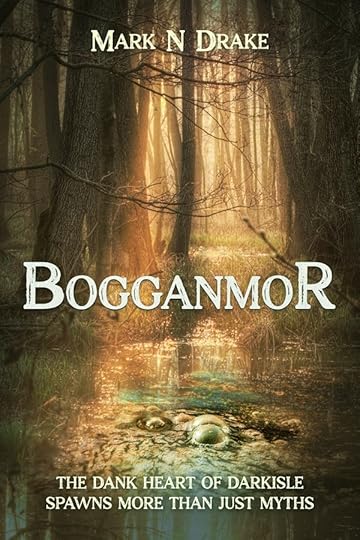 Like This? Try These!
Like This? Try These!
July 4, 2025
Author Spotlight: Jalen Tallis

Jalen Tellis (he/him) is an independent novelist & screenwriter who writes complex storytelling.
Author Links:
Website: jalentellisbooks.com
Instagram: @jalentellisofficial
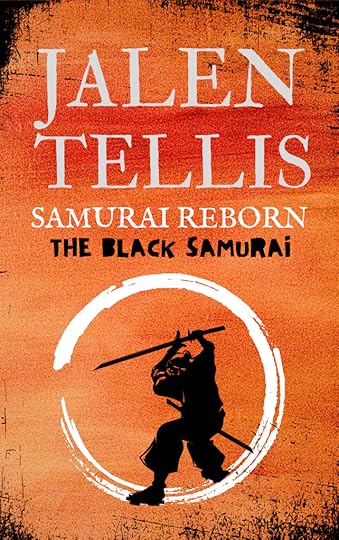
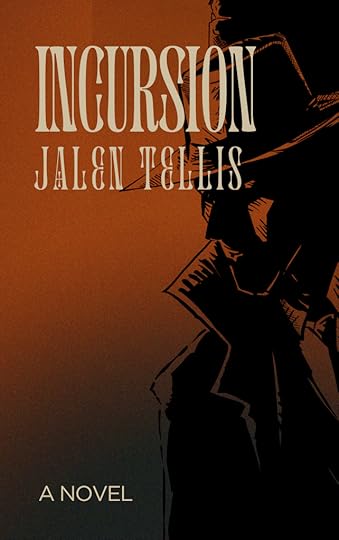
Welcome Jalen, you’re here to tell us about your current books. Let’s start with Incursion, your mystery Sci-Fi thriller, released March 2025. What gave you the idea for this novel, and can you tell us how you developed this idea into its current form?
Thank you for having me, I am honored and grateful to be given this interview. I had the idea for a sci-fi story ever since Middle School. It’s been one of those passion projects where I knew this story was going to be made but not so sure how.
Incursion had been in my brain for as long as I can remember, and ever since I was thinking about a new idea for my debut novel, this story never went away. This idea really came from my love of Sci-Fi and aliens; wanting to tell a story about the unknown and other species that are upon us.
I really wanted to dive into that type of concept where what would happen if an alien invasion were to happen in modern day? How would people in today’s society react? Who would be behind it? Those questions piqued my interests.
How did you develop your protagonist, Riley, a YouTube conspiracy theorist?
Well first off, I am a sucker for conspiracy theories. I use to love watching conspiracy videos on YouTube on pop culture and other areas around it. I enjoyed Shane Dawson, who inspired me to create the character Riley Marson.
Riley is the type of character that you don’t know nothing about but is forced to go along with him in this thrilling adventure. His job as a YouTube Conspiracy Theorist consumed him, making it a lifestyle.
I can’t say much about who is Riley Marson because that is the point, you’re not suppose to know who he is, or his background. Main reason I chose to make this story first person because I wanted it to be where Riley is the one telling you his story, and he doesn’t want you to know nothing about him.
What were the challenges of plotting a mystery, and laying out the clues through the book, while keeping up the action and tension?
The one biggest challenge I would say was making a mystery to keep the readers engaged from start to finish. The books is only 50k words, so it was intentional for it to be fast paced judging by the plot of the story that Riley has to prevent an alien invasion from happening in ten days.
The clues, the action, tension, and mystery were all straightforward which made it easy for me to structure the plot. Trying to make a fast-paced 50k word novel engaging while making sure the pacing isn’t too fast and too slow is hard, but as a writer, you challenge yourself and develop that skill. I see writing a skill, and the more you keep writing, learn and improve, then this type of structure will be a piece of cake to you.
Tell us a little bit about your writing process and style – have you found yourself developing or changing up how you write between your first novella (which is more action-adventure) and your latest book?
My writing process is very complex if I must say. I don’t outline my stories–like at all. Respect to all writers who do outline but I personally despise it.
My greatest blessing as a writer who been writing since I was a kid is I can structure a story in my head and know how it will begin and end. I study the craft of writing, I am a student, and I learn from the greats.
It only took a year to finally find my own voice and my style is quite different and unorthodox, which will be mix with readers, which is fine. I found myself developing how I write, because each book I make, my writing always improves. Like I said before, writing is a skill.
Your novella, Samurai Reborn: The Black Samurai, was a 2024 Indie Ink Awards Nominee for BEST BOOK COVER & COVER ARTIST, BEST LIGHT READ, BEST MENTOR CHARACTER and BEST MORALLY GRAY CHARACTER. Can you tell us more about this novella, and why you were nominated in these categories?
Samurai Reborn is a Black Fantasy Novella about a African American Samurai named Genji Sato who seeks revenge for the murder of his father and his village. This novella was a story of my imagination, and how I dived into the concept of fantasy and Samurai culture.
The book was nominated for those categories mainly because of my readers who helped voted. It wouldn’t be possible without them, readers who read enjoyed the book or even people just wanted to support me and voted.
Nobody knows the amount of drafts, revisions, rewrites, re edits that this book had. For it to be a book nominee in my first indie book awards is a total blessing from God.
What is your relationship with Japanese culture and media, and how did you draw upon these influences for Samurai Reborn?
Anime…I was a big anime person few years ago and Genji Sato was heavily influenced by Tanjiro from Demon Slayer and Aang from Avatar: The Last Airbender.
The history of Samurai and how certain anime medias like Samurai champloo and Afro Samurai had a big impact was the reason for me to create my own story in my own imagination.
Can you tell us about your future publication plans? What can we look out for next?
I am deep in writing for my new book in which when this interview comes out, I should be half way through. It’s a superhero story and it’s unlike anything I’ve written so far. Can’t say too much about it just yet but I am aiming for a 2027 release.
I was originally going to make it a 2026 publication release but due to other projects I’m working on ( I can’t say yet ) and focusing on my personal life, I think 2027 was a good year to go for. The book is aiming to be 90k words, maybe 100k, and I don’t want to rush it.
Like This? Try These!June 27, 2025
Author Spotlight: Eule Grey
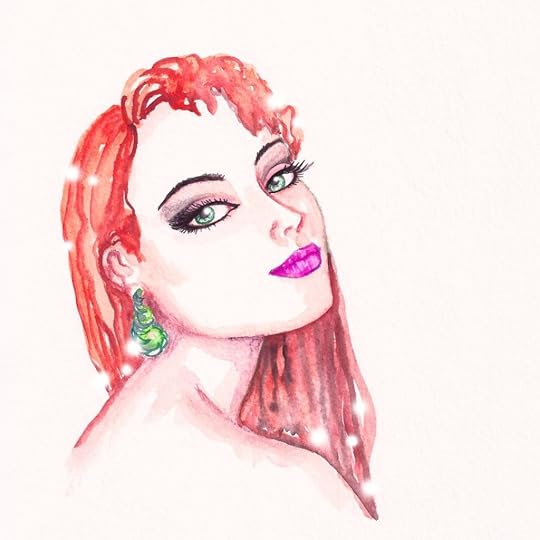
Eule (she/they) is a Sculpture artist, disability activist, and disabled author of queer, sparkly books.
She lives in northern England, adores cake and writes LGBTQI books with the characters she’s been seeking since childhood: disabled, neurodivergent characters with a cupcake fetish.
Author Links:
Website: eulegreyauthor.carrd.co
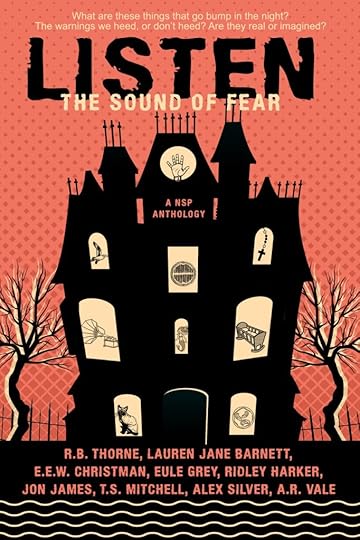
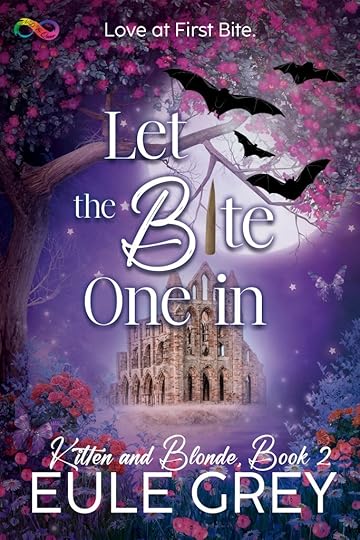
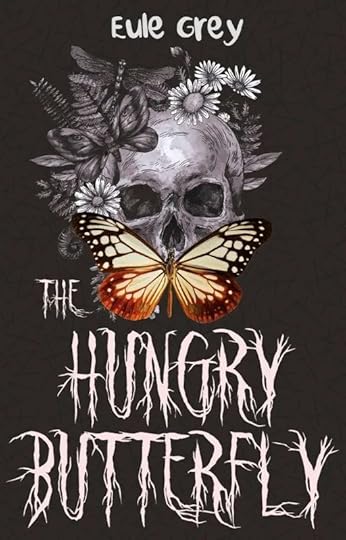
Does being a disability activist impact your writing and the kind of stories you tell? If so, in what ways?
If We Were Stars is a YA fantasy novella that asks the question, ‘what would it take for the world to understand autism better?’ But obviously I had to come up with an interesting plot or nobody would buy the book.
Some readers find this mixture of real life issues and fantasy challenging; others seem to love it.
The books I love writing the most are ones I’m driven to write because of my everyday experiences of injustice and inequality.
Do you find your work intersecting with queerness and neurodiversity, through characters, themes, or both? Which of your works would you particularly highlight for readers looking for queer and/or neurodiverse characters/themes?
My ND brain offers differences in style, plot, and arc from NT books.
The Kitten and Blonde books feature ND characters such as a vampire with a personality disorder and an autistic witch. The stories are set in Yorkshire, UK, and are light-hearted and romantic.
Readers seeking sapphic books with beer might enjoy this series.
My Easter lesfic book, due March 31, features an ND lesbian who leaves prison determined to stay away from relationships… what could go wrong, lol.
You’ve said that your work often focuses on themes of community, equality, sexuality, and freedom, which feel like they fit together really well – what types of community do you depict in your work, and what would your ideal community look like (if you have a vision of one)?
Several books are set in a world where a wall separates countries (Bite Club and When the Glow Lights the Woods). Characters don’t know who lives on the other side of the wall, and some of the lands are at war.
I enjoy constructing cultures and communities who yearn to meet despite the rules of separation. I don’t have an ideal community in mind, but I value voice above all.
My book, We, Kraken, is about a group of young people who get to speak about their experiences during war and construct a new world.
Tell us about a character you’ve written that really got under your skin.
The character of Jacinta, the vampire from Let the Bite One In. She has a painful past and is a complex character. I researched for her by interviewing my friend, who shares some of Jacinta’s mental battles.
How have readers responded to your work and can you share a few of your favourite comments/reviews that you’ve received?
Here’s one of my fav reviews from ‘If We Were Stars.’
“This is short but absolutely charming. JK Rowling would hate it, because neurodiversity and gender-fluidity are at the heart of the story. Kurt, the narrator, is autistic, and tells of his struggles to make sense of the world and cope with the assaults on his senses, thoughts and identity.
He is supported when he finds a partner, Beast, also neurodivergent, but different; autistic people are in no way all the same, one of the book’s crucial messages. They make another friend, at a distance, but lose touch.
They manage to navigate the perils of adolescence, find ways in which their very atypicality makes them special, find their own people. But just as they embark on the adventure of university life, still and always together, a crisis erupts, and only they can resolve it.
The sensitivity with which the issues and challenges are presented makes this book worth reading alone. The grumpy, angry character, who is forced to reassess his understanding of what makes human beings worthwhile is a subtle exploration of some of those challenges, while the switch of narrator in the final few chapters brings heart and humour as well as tension.
This is not a LGBTQI book that ticks off the components; it’s a book in which people are just various, difficult but always capable of learning. Perhaps that is one element that makes it a fantasy? I see little of that learning and caring in the world of April 2024. This is a book to give one hope, however.”
What can people look out for from you – anything coming soon?
An Easter Lesfic romance, The Break of Dawn, due March 31;
A Lesfic romance summer story due May, The Lost Selkie,
And a YA story about daydreaming, due September, The Heart of a Skyscraper.
Get the booksLike This? Try These!June 20, 2025
Author Spotlight: A.J. Barlowe

A. J. Barlowe (they/them) is an author, reader, and cat parent.
They write queer stories that deal with difficult subjects, but always with the overarching theme of hope, healing, and the power of human connection.
Author Links:
Book link: books2read.com/ASOR
Insta/tiktok: @aj_barlowe
What provided the seeds of your slowburn m/m novel, A Series of Rooms, and can you describe your writing process from that first idea to your first draft to your revised version to published final product? What did that process look like for you?
The seeds of this story have lived in my head & my heart for about a decade. The initial spark came about from a throwaway line in a television show, about an undercover cop who spend one night with a trafficking victim in order to maintain his cover, and they just spent the whole night talking. Something about the idea of that momentary reprieve, a single night of safety in an otherwise hellish existence, really stuck with me.
The characters and the story have taken different shapes over the years I spent mapping it out, but the basic premise was always the same: a survivor trapped in a terrible situation, a lonely patron desperate for companionship, and a gentle, patient love that blooms solely out of an emotional connection. Two strangers at a crossroads of isolation and yearning for more from life.
The first draft shares a similar framework to the final product, but there were certainly a lot of changes along the way (including a 50% word count reduction—oops). I think the biggest change revolved around the circumstances of Jonah’s captivity. The thing I obsessed over the most in editing/rewriting was trying to ensure that his story was not sensationalized or gratuitous.
That was always the most important factor to get right. I wrote most of the first draft in 2020 during quarantine, and the following four years saw me in various stages of pulling my hair out to make sure I was putting out a story I could stand behind.
A Series of Rooms deals with heavy topics of sex trafficking, SA, and healing from trauma through healthy relationships. What did you draw upon for these themes, and how did you go about tackling them sensitively in your novel?
I’ve always used writing as a way of dealing with my own experiences. The exact circumstances of my story are not a direct reflection of my own—this certainly isn’t autobiographical.
But there are very personal pieces of my own story inextricably woven into these characters, and certain scenes that felt like they were plucked directly from my heart.
I answered this a little bit in the previous question, but to elaborate on what the several-year journey looked like in terms of due diligence: I did lots and lots of research. Some of that research revolved around legal system logistics (and about how broken that system is). But a lot of it was reading firsthand accounts of male survivors.
What kinds of queer rep can be found in A Series of Rooms, and can you elaborate a little on the demisexual rep for those unfamiliar with the spectrum of asexuality?
Gay and demisexual representation! For those who are unfamiliar, demisexual is a label that falls somewhere on the asexual spectrum.
On a very simplistic level, it means that someone’s sexual attraction isn’t rooted in physical appearance or first impressions, that they only really get to that level with someone after an emotional connection has been formed.
Although I don’t use the label outright in the story (as I am not very good with assigning myself labels in real life), it is very clear that Liam identifies with this term. I think this is one of many factors that make him a safe person in Jonah’s eyes, when they are first walking that teetering line of trust. Jonah is used to being viewed as a sexual object, and Liam keeps subverting those expectations at every term. He truly only wants to get to know him as a person before their relationship resembles anything physical.
What are your favourite tropes in queer romance to read, and what are your favourite tropes to write?
I’m a sucker for hurt/comfort, always. Both reading and writing. In one of my promotional graphics or A Series of Rooms, I listed a trope of “the horrors of being treated gently for the first time,” and I feel like that really sums up my taste in a nutshell.
How have readers responded to your work and can you share a few of your favourite comments/reviews that you’ve received?
I have been absolutely blown away by the reader response to this story. It’s my very first novel, and I published independently, so I knew there was a very real chance that this book wouldn’t make it outside of a very niche circle of friends.
I’m very lucky to be able to say it has blown my expectations out of the water. I had a thousand sales in my first month, which was genuinely more than I expected to get in a lifetime.
The people in the social media book spaces have been especially kind to me. It’s tough to pick only a few of the lovely comments, but here are some that really stuck with me:
“This is a story about two young men desperate to mean something to someone. Though strangers at first, Liam immediately sees Jonah’s pain and doesn’t look away.” – @reading_oceanside (IG)
“Intensely emotional–jarring–but vividly and uniquely gorgeous.” – @cara.reads.all.the.books (IG)
“The darkness of what Jonah goes through is expertly balanced by the softness Liam shows him. There were times I cried and raged, but I was ultimately left with hope for humanity and the kindness we are capable of showing each other.” – @elliot.roi.reads (IG)
What can people look out for from you – anything coming soon?
I am currently working simultaneously on a couple of stories, but trying to keep a lid on the details… at least for a little bit longer. Hoping to meet my word count threshold for an announcement by the end of March!
June 13, 2025
Monster Manor Book Fair 13-15 June 2025
Yelen & Yelena will be discounted to £1.99 across all platforms for this sale, including my own website shop and Ko-Fi shop! It is also included in the Itch bundle available from today.
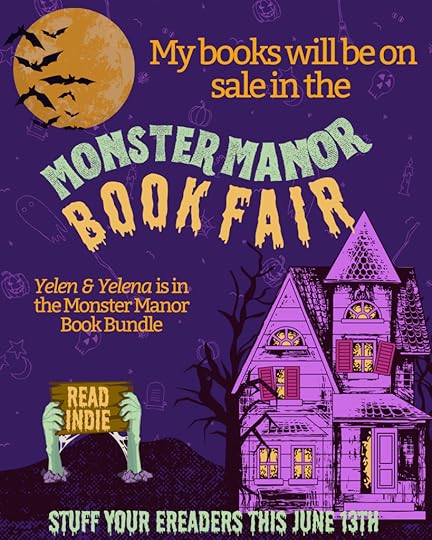 Check it out hereFrom the Itch Page:
Check it out hereFrom the Itch Page:A bundle hosted by H.S. Wolfe with content from 83 creators.
DRM free
Buy 118 items for $25 Regularly ~$343 Save 92%!
Welcome to the second annual Monster Manor Book Fair Bundle! This is a collection of adult LGBTQIA+ Comics, short stories, novellas and novels. For the price of a new hardcover book, you can own 118 DRM-FREE stories. By purchasing this bundle you are directly supporting queer and trans creators.
If you enjoy what you read, consider leaving comments and ratings on works! This can help boost the small creators you directly supported immensely!
What is Monster Manor?
Celebrating its 3-year anniversary, Monster Manor is a discord server dedicated to providing community and connections for queer indie authors and readers, as well as a place for resources, events, and an indie book club. Although we recomend joining the discord, it is often not required for events hosted outside of the server. To learn more about monster manor you can join the discord and check out our website.
About the bundle
Please be responsible for your own content warnings. This bundle contains a mix of content across many genres, including high-heat and erotic stories, as well as stories that contain dark topics. This bundle is suitable for adults only, and should only be purchased by folks of legal age. To find out more check out each creators page or take a look at our website.
June 11, 2025
Author Spotlight: V. Walker
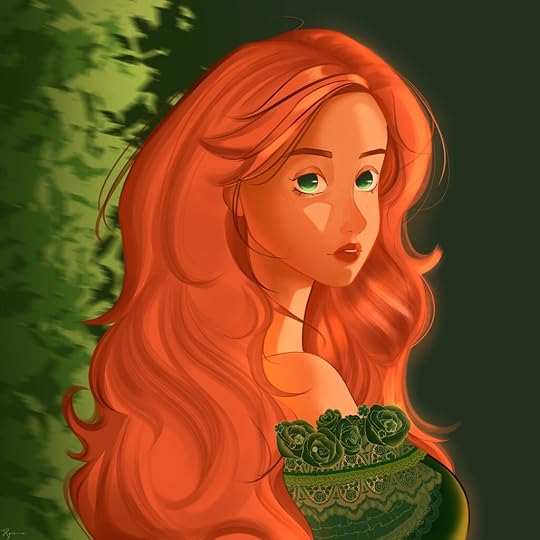
V. Walker is a poet, indie author, and indie interactive fiction developer based in the United States. Her first published book was The Fragile Humans We Are, released in February of 2025.
She’s currently working on her second poetry collection and running Substack publications around poetry, collaborative writing, and indie publishing. She also creates interactive fiction games, which are available on itch.io.
When she’s not writing or reading, she enjoys traveling and playing RPG games. You can find her primarily on Threads.
Author Links:
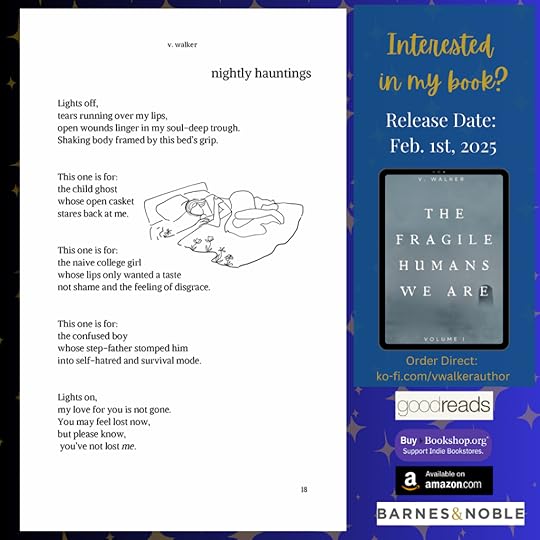
Let’s talk about your poetry collection, The Fragile Humans We Are. How did you decide upon the poems that would go into it, and the order of the poems in the collection?
So, all of these poems were written in the last ten years, with a handful of them having been written while I was in college. I knew back then that I wanted to publish a poetry collection, but I didn’t have the confidence to do that. And so, I actually made the decision to create The Fragile Humans We Are back in 2020 during the pandemic.
The themes center around the human experience, particularly, during the beginning of the pandemic, I realized just how fragile humans are. But I also discovered how resilient we are. I wanted the book to focus on a journey that includes grief, loss,and pain – but also friendship, love, and kindness.
When deciding on the poems, I first created the four sections in the book: coming of age lessons on love, when the lights start to dim, stumbling through the darkness, and feeling the sun on my skin again.
I think used a spreadsheet and identified what I thought were the best poems for each theme. So the order of the poems is essentially a journey that begins with learning about how cruel the world can be, then moves on to the fragility of a person, the darkness we can fall into, and then the resilience and love that we can experience.
Your work often focuses on the resilience of the human spirit, particularly in the face of love and loss, with related themes spinning from these central ideas. What motivates you to write about these things, and why choose poetry as your medium to explore them?
It’s easy to get caught up in your problems and pain. But I eventually healed enough to realize that there are billions of people in this world and while every story is unique, there are themes that resonate with many people, millions, or even billions of people.
So, I love focusing on the human experience and our resilience because I want people to know that they aren’t alone. Even when they are stumbling through the darkness, there is a light. It may not be easy to reach. But if you keep going, you will find it. I truly believe that. (The last part about why poetry is answered two questions below, as I felt there was some overlap in my answer!)
What forms of poetry have you experimented with? Do you think you have found your ‘style’ or is that constantly evolving?
I haven’t done a ton of experimentation, to be honest. I hate writing haiku – I love to read them but it’s just not my thing. I’ve tried Villanelle and I was okay with the work I created but it wasn’t my favorite.
I generally just write whatever feels good. Sometimes there’s rhyme, sometimes there’s not and I do a lot of free verse. I do want to try my hand at a sonnet and some other styles but I just haven’t gotten there yet.
Do you think there is something innate about the medium of poetry that enables you to express your ideas – if so, can you explain a bit about this and what poetry means to you?
Poetry has always spoken to me because it is the genre, in my humble opinion, that is most open for interpretation.
No two people are going to read a poem and have the same experience, but there will be overlap. So, it’s a medium that is relatable to a broad audience but niche enough to an individual’s experience.
For me, poetry is a window to pieces of someone’s soul.
How have readers responded to your work and can you share a few of your favourite comments/reviews that you’ve received?
Since I’ve begun sharing my work on Substack, I’ve seen such a positive response from the incredible community there. A few of my favorite comments and reviews:
“This is such a somber and slightly heart-wrenching piece, but it’s also deeply relatable.”
“This hits so hard for me, but it’s so gorgeous and I don’t know how to explain it, but it feels like the first ray of sunshine peeking through the clouds after it has rained for weeks.”
“i cannot encapsulate how grateful i am to experience such incredible artistry and talent in my lifetime. what a phenomenally vulnerable, raw, and haunting piece. i truly have no words.”
I never thought I would hear words like this so it really brings tears to my eyes and fills my heart with gratitude.
What can people look out for from you – anything coming soon? If they sign up for your poetry newsletter, what can they expect?
I’m currently working on my second poetry book which I will release this year, hopefully this summer.
It’s called “What I Know of Love I Learned From Grief.” It’s significantly larger than my debut “The Fragile Humans We Are: Volume One”.
This WIP is about all the different ways that people grieve – not just death. Grieving who you were, the life you could have had, the person you loved, the time in your life you can’t get back, and so much more.
With this next book, I’m not just telling my story and my experiences, but drawing on the life around me, both real and fictional, to highlight the ways that loss intersects with love.
I have two newsletters – one is my Substack and with that, you get new poems from me, reviews of poetry books I’ve read, and some musings. You can expect posts weekly. With my regular newsletter from my website, I send a maximum of 1 to 2 emails a month. This newsletter is really designed for people who want the occasional new poem in their inbox, along with announcements, discounts, and giveaways.
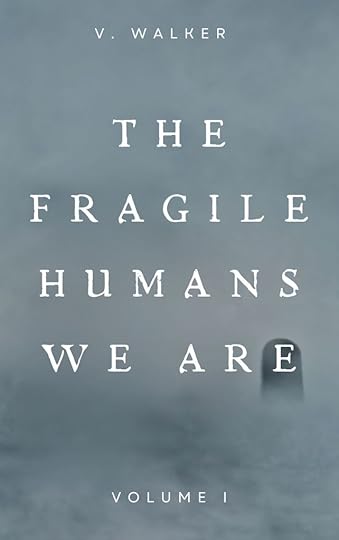 Like This? Try These:
Like This? Try These:



